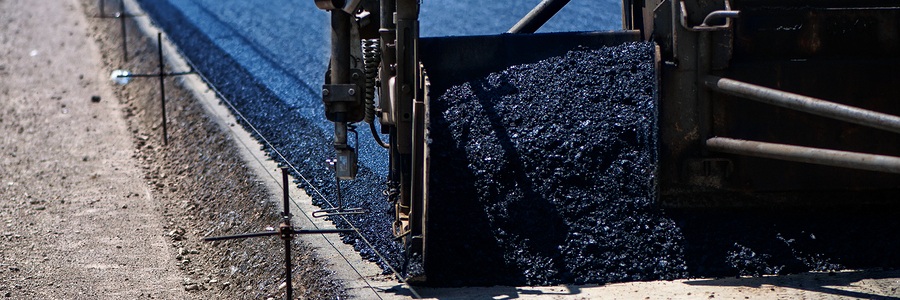What Does A1 Professional Asphalt & Sealing Llc Do?
What Does A1 Professional Asphalt & Sealing Llc Do?
Blog Article
The Best Guide To A1 Professional Asphalt & Sealing Llc
Table of ContentsThe smart Trick of A1 Professional Asphalt & Sealing Llc That Nobody is DiscussingA1 Professional Asphalt & Sealing Llc Can Be Fun For EveryoneHow A1 Professional Asphalt & Sealing Llc can Save You Time, Stress, and Money.The Only Guide to A1 Professional Asphalt & Sealing LlcThe smart Trick of A1 Professional Asphalt & Sealing Llc That Nobody is Discussing

The oil in a car engine is not just oil. It contains a selection of additives to improve the automobile's efficiency. These consist of polymers, viscosity modifiers, warm stabilizers, added lubricating substances, and use ingredients. The REOB has all the additives that were in the waste oil as well as the wear metals from the engine (generally iron and copper).
Nonetheless, by making several blends making use of different REOB examples and different asphalt binders, the variants mostly can be averaged out. Numerous States offered samples of well-known REOB make-up to TFHRC researchers, who evaluated the examples to compare the percentage of included (understood) REOB to the found (examined) amount. The evaluations showed a comparable percent of added and located REOB.
An Unbiased View of A1 Professional Asphalt & Sealing Llc
They got a frustrating feedback. The TFHRC scientists analyzed 1,532 examples from 40 States, one Canadian province, and two Federal Lands Freeway departments. They assessed each example twiceamounting to greater than 3,000 evaluations. None of those States understood that the asphalt they were acquiring had REOB. One State insisted its samples had no REOB.
Of the 1,532 examples evaluated, 12 percent contained REOB, and some had considerably high degrees of it at 1020 percent. The highest degree was 34 percent in a sample from Texas, which TxDOT had made use of in a patching compound. This testing likewise revealed the presence of phosphoric acid in 11 percent of the examples, and 2 percent included ground tire rubber.
2 years back at TRB's yearly meeting, the Federal researchers held an REOB workshop and provided the findings of their laboratory analyses to a standing room-only group. Some companies do not especially ban REOB, they do impose physical tests that avert its useeffectively a restriction. Others do not prohibit it by requirements, yet have contracts with asphalt suppliers to avoid the usage of REOB
Not known Details About A1 Professional Asphalt & Sealing Llc
A handful do allow REOB, some within certain limitations. Ohio and Texas limit levels to much less than 5 percent of the asphalt. To develop a reliable examination technique that all States can make use of, the TFHRC scientists established up a round-robin test strategy. The individuals are 11 State highway agencies (Illinois, Massachusetts, Minnesota, Mississippi, Montana, North Carolina, Oklahoma, South Carolina, Texas, Vermont, and Wyoming), 2 independent screening labs, the Ministry of Transport in Ontario, Queen's College in Ontario, and an Ontario paving service provider.
The participants are checking the examples independently making use of the standards supplied by the TFHRC researchers. The output will certainly be a suggested AASHTO test technique that any kind of State can embrace and make use of.
The pavement with REOB, which lies 0.6 mile (1 kilometer) from the pavement without REOB, has similar subgrade, website traffic thickness, and environment. Nonetheless, the segment of Highway655 with 5 to 10 percent REOB showed considerable cracking. In this example, the existence of REOB was the recognized source of cracking at a low temperatures.
"In our experience in copyright, even little amounts of 23 percent can be an issue." An area of examination pavement in Minnesota (MN1-4) found to consist of REOB also broke prematurely. The pavement done well for the very first 3 to 4 years, however after that started to crack. This pavement is also subject to low temperature levels.
The smart Trick of A1 Professional Asphalt & Sealing Llc That Nobody is Discussing
The tests were not considerable, however they showed that at levels of 6 percent or even more, the tensile stamina of the asphalt went down substantially. At a level of 3.5 percent REOB, the variant in the physical examination techniques was more than the impact of REOB. In reality, it was hard for scientists to evaluate whether REOB existed.

One binder parameter taken into consideration is the distinction in between the low temperature vital spec temperature for tightness (S) in the bending light beam rheometer and the bending beam of light rheometer creep find this incline (m-value) noted as Tcritical. Two independent research teams, one from AASHTO and the other from the Asphalt Institute, concluded that even more research is required on the use of REOB in asphalt.
Previously, all asphalt screening determined design residential properties such as tightness. These examinations do not show what materials had been included to the asphalt. One sample obtained during the TFHRC study had a really odd analysis. The example had the following examination results: Superpave PG 64-28 with a heat grade of 67.3 Tcritical on the bending beam of light rheometer was 6.7 levels Celsius.

The Facts About A1 Professional Asphalt & Sealing Llc Revealed
These results show there are weak points in the standard design screening protocols that may be made use of. The producer may have an economic benefit and the item passes all the standardized examinations, but the item may not be valuable to guaranteeing long-term efficiency. To address this problem and the growth of new asphalt additives and extenders, TFHRC is starting a research program to use handheld spectroscopic devices, x-ray fluorescence spectroscopy, and Fourier transform infrared spectroscopy to make it possible for analyses to be performed in the area rather than needing to take samples back to the laboratory.
Report this page